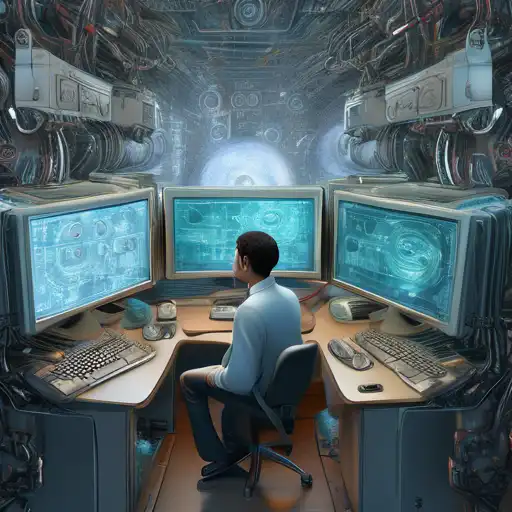Introduction to Computer Vision
Computer vision is a field of artificial intelligence that trains computers to interpret and understand the visual world. By leveraging digital images from cameras and videos and deep learning models, machines can accurately identify and classify objects—and then react to what they "see."
The Science Behind Computer Vision
At its core, computer vision involves the automatic extraction, analysis, and understanding of useful information from a single image or a sequence of images. It involves the development of a theoretical and algorithmic basis to achieve automatic visual understanding.
Key Technologies in Computer Vision
- Image Classification
- Object Detection
- Image Segmentation
- Facial Recognition
Applications of Computer Vision
Computer vision is used in a variety of applications, from enabling self-driving cars to interpret their surroundings, to helping doctors diagnose diseases from medical imaging, and even in retail for inventory management.
Revolutionizing Industries
Industries such as healthcare, automotive, and retail are being transformed by computer vision. For example, in healthcare, computer vision algorithms can analyze X-rays faster than human radiologists, leading to quicker diagnoses.
Challenges and Future Directions
Despite its advancements, computer vision faces challenges such as understanding context and dealing with poor lighting or obscured objects. However, with the continuous improvement in machine learning algorithms, the future of computer vision looks promising.
Overcoming Obstacles
Researchers are working on making computer vision systems more robust and capable of understanding complex scenes. This includes improving the ability to recognize objects in varying conditions and from different angles.
Conclusion
Computer vision is a rapidly evolving field that is teaching machines to see and interpret the world around them. With its wide range of applications and the potential to revolutionize various industries, it represents a significant leap forward in the way machines interact with the physical world.
As we continue to advance in artificial intelligence and deep learning, the capabilities of computer vision will only expand, opening up new possibilities and applications that we can only begin to imagine.
